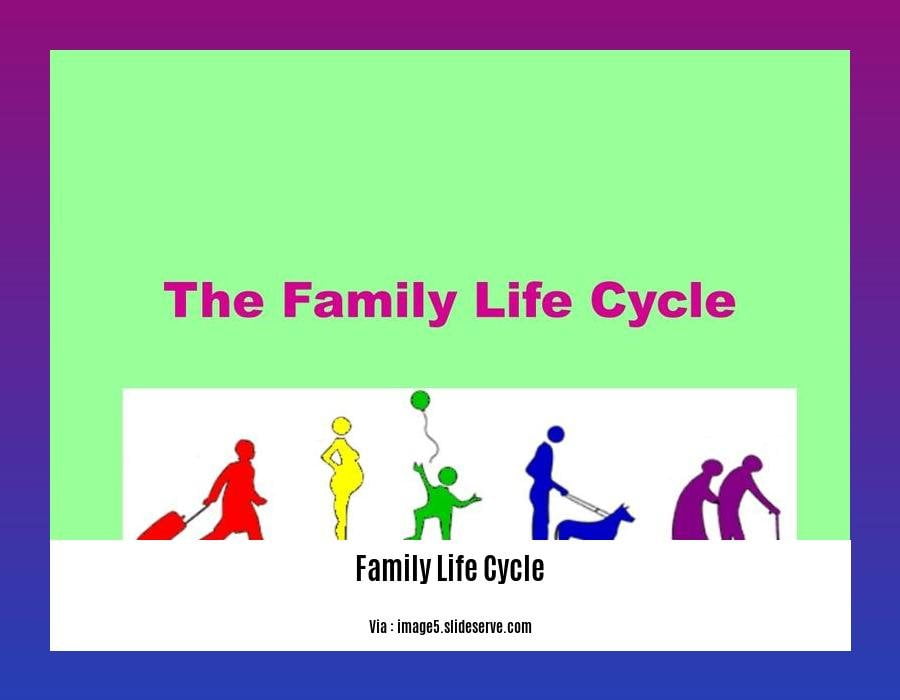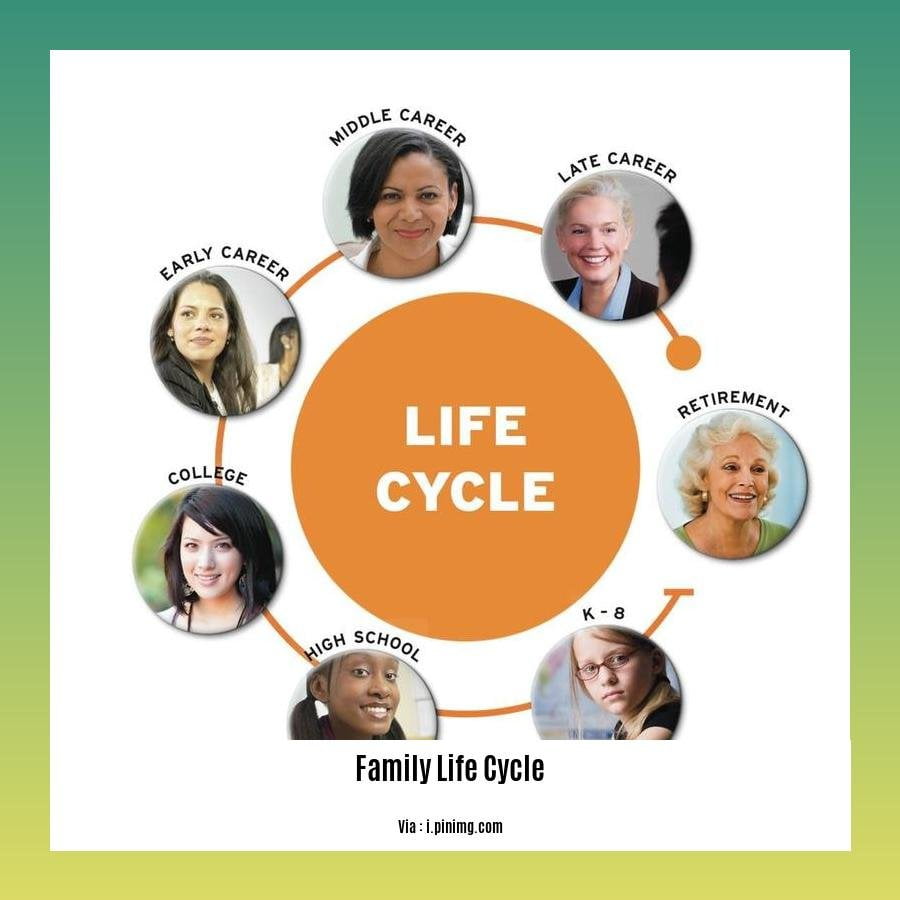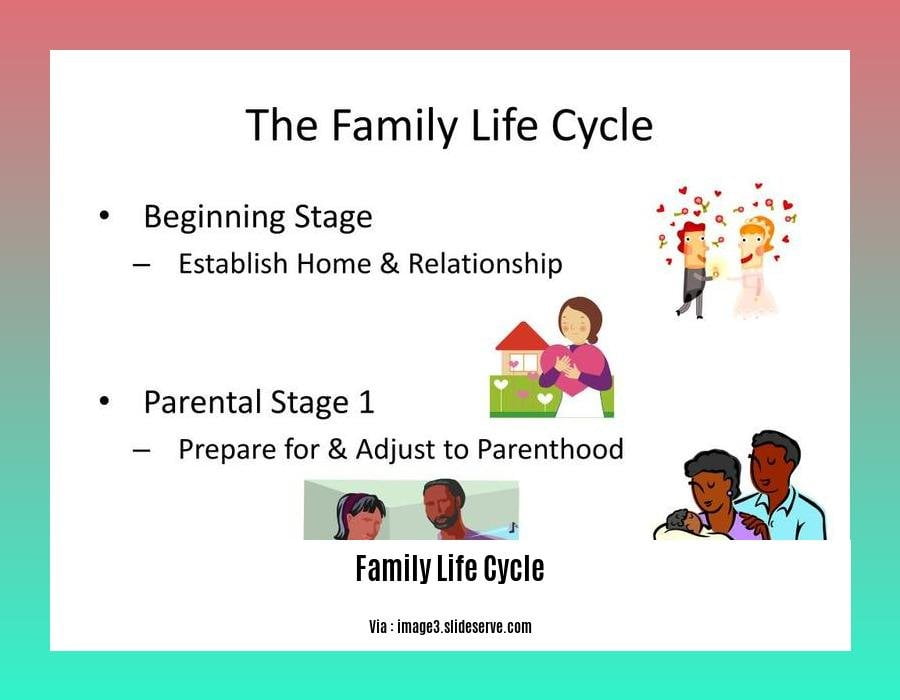Explore the intricate relationship between family life cycle stages and consumer behavior in our engaging article, titled “The Impact of Family Life Cycle Stages on Consumer Behavior: Exploring the Intricate Relationship.” As consumer preferences and purchasing decisions are influenced by various factors, understanding the specific dynamics within each life stage becomes crucial for effective marketing strategies. With insights from a seasoned marketing professional with extensive experience in consumer behavior and market research, this article offers unparalleled analysis and valuable recommendations for targeting different demographics at each family life cycle stage.
Key Takeaways:
- The family life cycles model describes the stages consumers go through when they have families.
- The most common stages in the family life cycle model include bachelor, new married couple, fully nest 1, fully nest 2, empty nest, and solitary survivor.
- Each stage of the family life cycle has different characteristics and consumer behaviors.
- Marketers can influence consumers by understanding their stage in the family life cycle and tailoring their strategies accordingly.
- Family life cycle stages influence consumer behavior and consumption patterns.
- Family life cycle stages are important determinants of consumer behavior and consumption patterns, particularly for home appliance consumers.
- Family life cycle marketing is a method of selling to consumers based on the stages of their lives.
- The bachelor stage is characterized by interests in appearances and impulsive and premium buying.
- Newly married couples have better financial positions in the initial stage and may both be earning members.
- Families in full nest stages have varying numbers of children and their purchases are dominated by family needs.
- The solitary survivor stage focuses on savings.
- The family life cycle concept is useful for anticipating market growth.
Family Life Cycle Stages in Consumer Behavior: Exploring the Intricate Relationship

In the world of marketing, understanding consumer behavior is essential for developing effective strategies to target specific demographics. One aspect of consumer behavior that has gained significant attention is the concept of family life cycle stages. These stages can offer valuable insights into the preferences and purchasing decisions of consumers at different points in their lives. By recognizing the unique characteristics and behaviors associated with each stage, marketers can tailor their approaches to effectively engage consumers and drive sales.
Understanding the Family Life Cycle Model
The family life cycle model describes the progression that individuals go through as they start families and go on to become parents. The model consists of several stages, each marked by different demographic and psychological factors. Let’s take a closer look at the most common stages in the family life cycle model:
1. Bachelor Stage: Living the Solo Life
In this stage, individuals are typically young and unmarried. They have a strong focus on personal appearance and often engage in impulsive and premium buying. Marketers can target this stage by promoting products and services that cater to young, single individuals who value image and instant gratification.
2. New Married Couple: Starting a Life Together
As couples embark on their journey of marriage, they experience a shift in their financial situation. They may both be earning members, allowing for greater financial stability. Marketers can appeal to this stage by offering products and services that cater to newlyweds’ aspirations, such as travel packages, home furnishings, and personal finance services.
3. Fully Nest 1: Welcoming the Pitter-Patter of Little Feet
At this stage, couples enter into parenthood for the first time. Their purchasing decisions are dominated by the needs of their growing family. Marketers can capture their attention by targeting products and services that cater to infants and young children, including baby care products, education services, and family-oriented entertainment options.
4. Fully Nest 2: Expanding the Nest
In this stage, families may have more than one child, and their purchasing decisions continue to revolve around their children’s needs. Marketers can focus on providing products and services that cater to the varied interests and requirements of families with multiple children, such as larger vehicles, family-friendly vacations, and educational toys.
5. Empty Nest: The Calm After the Storm
Once the children have left the nest, couples enter the empty nest stage. With more disposable income and time on their hands, they may be inclined to spend on leisure activities, hobbies, and travel. Marketers can target this stage by promoting products and services that cater to the newfound freedom and desires of empty nesters, such as retirement planning services, travel packages, and lifestyle products.
6. Solitary Survivor: Seeking Financial Security
This final stage is characterized by individuals who have lost their spouse or partner and are focused on rebuilding their lives. They prioritize savings and may be more cautious with their purchases. Marketers can appeal to this stage by offering financial planning services, insurance products, and other essentials for single individuals.
The Influence of Family Life Cycle Stages on Consumer Behavior
The different family life cycle stages have a significant impact on consumer behavior and consumption patterns. By understanding which stage their target audience is in, marketers can tailor their messaging, product offerings, and promotional strategies to resonate with consumers’ unique needs and desires.
For instance, a brand targeting consumers in the bachelor stage might emphasize the benefits of their products or services in enhancing personal appearance or providing immediate gratification. On the other hand, a brand targeting families in the fully nest stages might highlight the convenience, durability, and value for money of their offerings.
By recognizing the influence of family life cycle stages on consumer behavior, marketers can ensure that their marketing efforts are effective, relevant, and appealing. They can develop customized strategies that take into account the distinctive characteristics and preferences of each stage, ultimately driving brand awareness, customer engagement, and increased sales.
Conclusion
The intricate relationship between family life cycle stages and consumer behavior is undeniable. By recognizing the unique characteristics and behaviors associated with each stage, marketers can tailor their strategies to effectively engage consumers and drive sales. The family life cycle model provides a valuable framework for understanding the changing needs and desires of consumers as they progress through different stages of family life. By leveraging this knowledge, marketers can anticipate market growth, gain a competitive edge, and build long-lasting connections with their target audience. So, the next time you plan your marketing campaign, consider the impact of family life cycle stages on consumer behavior to make sure your message reaches the right audience at the right time.
[Table]
| Stage | Characteristics | Marketing Strategies |
|---|---|---|
| Bachelor Stage | Interests in appearances, impulsive, premium buying | Promote products that enhance personal appearance and offer immediate gratification |
| New Married Couple | Better financial position, both earning members | Offer products/services that cater to newlyweds’ aspirations: travel, home furnishings, personal finance |
| Fully Nest 1 | Dominated by family needs and care for infants | Target infant and child-related products and services, education services, family entertainment |
| Fully Nest 2 | Multiple children, varied interests and requirements | Focus on products/services that cater to families with multiple children |
| Empty Nest | More disposable income, desire for leisure activities | Promote retirement planning services, travel packages, lifestyle products |
| Solitary Survivor | Focus on savings, cautious purchasing | Offer financial planning services, insurance products, and essential single living necessities |
Table: Key characteristics and marketing strategies for each family life cycle stage.
References:
Hey there! Are you looking for information about family function leaves? Check out our article on family function leave policy, which provides all the details you need. Click here to learn more: family function leave
Looking for famous criminal lawyers in Bangalore? Look no further! Our list of renowned criminal lawyers in Bangalore will help you find the best representation you need. Discover more here: famous criminal lawyers in Bangalore
Did you know that exotic animals have fascinating facts? Uncover intriguing information about these unique creatures in our article about facts about exotic animals. Dig deeper into this intriguing topic by clicking here: facts about exotic animals
Consumer Preferences and Purchasing Decisions in Different Family Life Cycle Stages

Consumer preferences and purchasing decisions are strongly influenced by the different stages of the family life cycle. The family life cycle refers to the various stages individuals and families go through as they progress from bachelorhood to dissolution. Each stage of the family life cycle is characterized by unique needs, wants, tastes, and preferences, which in turn impact consumer behavior and consumption patterns.
Understanding the impact of family life cycle stages on consumer decision making is essential for marketers. By recognizing and understanding these stages, marketers can tailor their marketing strategies and approaches to effectively target and influence consumer behavior. Let’s explore how consumer preferences and purchasing decisions vary across the stages of the family life cycle.
Bachelorhood Stage:
In the bachelorhood stage, individuals are typically young, single, and focused on building their careers and personal lives. Consumer preferences in this stage revolve around products and services that enhance personal appearance, offer immediate gratification, and cater to their active lifestyle. For marketers, this presents an opportunity to promote fitness products, grooming essentials, entertainment services, and travel experiences.
New Married Couple Stage:
The new married couple stage is characterized by the excitement of starting a life together. During this stage, consumer preferences involve products and services that cater to their aspirations and newfound responsibilities. Marketers can appeal to this stage by offering products such as travel packages, personal finance services, home appliances, and home decor that align with their desire to create a comfortable and secure life.
Parenthood Stage:
The parenthood stage is when couples transition into becoming parents. Consumer preferences in this stage are centered around products and services that cater to the needs of infants, children, and the entire family. Marketers can target this stage by promoting baby care products, educational toys, family-friendly vacations, and household essentials that simplify their daily routines.
Post-Parenthood Stage:
In the post-parenthood stage, consumer preferences shift as couples enter a phase with more independence and freedom. Marketers can target this stage by promoting leisure activities, retirement planning services, and lifestyle products that cater to their evolving needs and interests. This stage offers opportunities for marketers to engage with consumers through experiences and products that enhance their quality of life.
Dissolution Stage:
The dissolution stage refers to the period after a family has gone through a separation or divorce. In this stage, consumer preferences are influenced by the need for financial planning, insurance products, and essentials for single living. Marketers can cater to this stage by offering services that support individuals in their new life circumstances and provide assistance in managing their finances and personal well-being.
By recognizing the influence of family life cycle stages on consumer behavior, marketers can develop customized strategies that effectively target specific consumer preferences and purchasing decisions at each stage. This understanding allows marketers to align their products, services, and marketing efforts with the unique needs and preferences of consumers, increasing the likelihood of success in the market.
Key Takeaways:
– Consumer preferences and purchasing decisions are strongly influenced by the stages of the family life cycle.
– The bachelorhood stage focuses on personal appearance, immediate gratification, and catering to an active lifestyle.
– The new married couple stage is characterized by aspirations, responsibilities, and a desire for a comfortable life.
– Parenthood stage preferences center around products and services for infants, children, and the entire family.
– Post-parenthood stage preferences shift towards leisure activities, retirement planning, and lifestyle products.
– The dissolution stage requires products and services that support individuals in managing their new life circumstances.
Sources:
– Association for Consumer Research
Marketing Strategies for Targeting Different Family Life Cycle Stages
The family life cycle stages have a profound influence on consumer behavior, making it crucial for marketers to develop effective marketing strategies that cater to each stage’s unique characteristics. By understanding the specific needs, preferences, and aspirations of individuals at different stages, marketers can tailor their approaches and maximize their impact. In this article, we will explore marketing strategies for targeting different family life cycle stages and how they can shape consumer decision making.
Bachelor Stage: Promoting Personal Appearance and Immediate Gratification
At the bachelor stage, individuals are typically young, independent, and focused on personal growth. Marketing strategies for this stage should revolve around promoting products that enhance personal appearance and offer immediate gratification. This includes fashion and grooming products, fitness memberships, entertainment experiences, and technological gadgets.
New Married Couple Stage: Catering to Aspirations
The new married couple stage is characterized by shared aspirations and the desire to build a life together. Marketers can target this stage by offering products and services that cater to their aspirations, such as travel packages, home decor, personal finance services, and experiences that promote bonding and adventure.
Fully Nest Stages: Meeting the Needs of Growing Families
In the fully nest stages, marketers should focus on products and services that cater to the needs of infants, children, and families with multiple children. This includes baby products, educational toys, family-friendly entertainment options, health and wellness services, and household appliances that simplify daily routines.
Empty Nest Stage: Promoting Leisure and Retirement Planning
As individuals enter the empty nest stage, they often have more disposable income and time for leisure activities. Marketers can target this stage by promoting leisure experiences, retirement planning services, travel opportunities, lifestyle products, and social engagement platforms.
Solitary Survivor Stage: Essentials for Single Living
In the solitary survivor stage, individuals may be widowed, divorced, or living alone. Marketers can target this stage by offering products and services that cater to their unique needs, such as financial planning services, insurance products, home security systems, health and wellness products, and essentials for single living.
Key Takeaways:
- Understanding the stages of the family life cycle is essential for marketers to develop effective marketing strategies.
- Marketers can tailor their approaches based on the unique characteristics and behaviors associated with each stage.
- By recognizing the influence of family life cycle stages on consumer behavior, marketers can develop customized strategies, drive brand awareness, and increase sales.
Sources:
1. Project Guru – Family Life Cycle Stages in Marketing
2. Small Business – Stages of Family Life Cycle Marketing
Case Studies and Examples of Successful Marketing Campaigns for Each Family Life Cycle Stage
In the world of marketing, understanding consumer behavior is crucial for developing effective strategies. One aspect that plays a significant role in shaping consumer preferences and purchasing decisions is the family life cycle. The family life cycle stages provide valuable insights into the diverse needs, wants, and preferences of consumers at different stages of their lives.
To effectively target and engage with consumers, marketers need to tailor their approaches and strategies based on the unique characteristics and behaviors associated with each family life cycle stage. Let’s explore some case studies and examples of successful marketing campaigns that have effectively catered to consumers at each stage.
Young Couples Starting a Family
For young couples starting a family, the focus is often on purchasing baby products and child care services. A successful marketing campaign in this stage would be the “Pampers – Love, Sleep & Play” campaign. Pampers understood the needs of new parents and created an emotional campaign that highlighted the joys and challenges of parenthood while emphasizing the importance of comfort and quality for their babies.
Empty Nesters
Empty nesters, who are older couples with no children living at home, have different priorities and preferences. A successful marketing campaign for this stage is the “Travelocity – Wander Wisely” campaign. Travelocity targeted empty nesters by promoting travel destinations and experiences that cater to their desire for adventure, relaxation, and exploration.
Parents with Young Children
Parents with young children, also known as the full nest I stage, require products and services that cater to their growing family’s needs. A successful marketing campaign for this stage is the “Disney World – Where Dreams Come True” campaign. Disney World created a campaign that appealed to parents by highlighting the magical experiences and family-friendly activities they could enjoy with their young children.
Older Couples without Children at Home
Older couples without children living at home, known as empty nest II stage, often prioritize leisure activities and health-related products and services. A successful marketing campaign for this stage is the “YMCA – Active Aging” campaign. The YMCA targeted empty nesters by promoting their fitness programs and facilities, emphasizing the importance of staying active and maintaining a healthy lifestyle.
These are just a few examples of successful marketing campaigns that have effectively targeted consumers at different family life cycle stages. By recognizing the unique needs and preferences of consumers in each stage, marketers can develop customized strategies that drive brand awareness and increase sales.
Key Takeaways:
– Successful marketing campaigns tailor their strategies based on the specific family life cycle stage.
– Understanding the needs and preferences of consumers at each stage is essential for effective targeting.
– Examples of successful marketing campaigns include Pampers’ “Love, Sleep & Play” for young couples starting a family, Travelocity’s “Wander Wisely” for empty nesters, Disney World’s “Where Dreams Come True” for parents with young children, and YMCA’s “Active Aging” for older couples without children at home.
Sources:
1. The Pampers Love, Sleep & Play Campaign
2. Disney World – Where Dreams Come True Campaign
3. Travelocity – Wander Wisely Campaign
4. YMCA – Active Aging Campaign
FAQ
Q1: What is the family life cycle and how does it impact consumer behavior?
A1: The family life cycle refers to the stages that individuals go through as they progress from bachelorhood to dissolution within a family unit. These stages have a significant impact on consumer behavior and consumption patterns, as the needs, wants, tastes, and preferences of consumers change at each stage.
Q2: What are the common stages in the family life cycle model?
A2: The most common stages in the family life cycle model include bachelorhood, new married couple, fully nest 1, fully nest 2, empty nest, and solitary survivor. These stages represent different life situations and responsibilities, which influence consumer preferences and purchasing decisions.
Q3: How does family life cycle marketing work?
A3: Family life cycle marketing is a method of selling to consumers based on the stages of their lives. By understanding the specific stage of the family life cycle that a consumer is in, marketers can tailor their marketing strategies and offerings to meet their unique needs and preferences.
Q4: How does the family life cycle influence consumer buying decisions?
A4: The family life cycle stages significantly influence consumer buying decisions. For example, newly married couples may have more disposable income and be willing to invest in home appliances, while families in the full nest stages may prioritize purchases that cater to the needs of their children. Understanding the family life cycle stage helps marketers anticipate consumer needs and develop appropriate products and services.
Q5: How can marketers utilize the concept of the family life cycle to target consumers effectively?
A5: Marketers can utilize the concept of the family life cycle to target consumers effectively by designing and formulating product strategies and marketing programs that resonate with consumers at each life stage. By recognizing and understanding the unique characteristics and consumer behaviors of each stage, marketers can develop tailored marketing campaigns and offerings to meet the specific needs and preferences of their target audience.
- Unlock Filipino Culture: A Deep Dive into Traditions and Practices - April 23, 2025
- Unlock Spanish Culture: Insights & Opportunities Now - April 23, 2025
- White Spirit Uses & Substitutes: A Deep Dive for Pros & DIYers - April 23, 2025
















